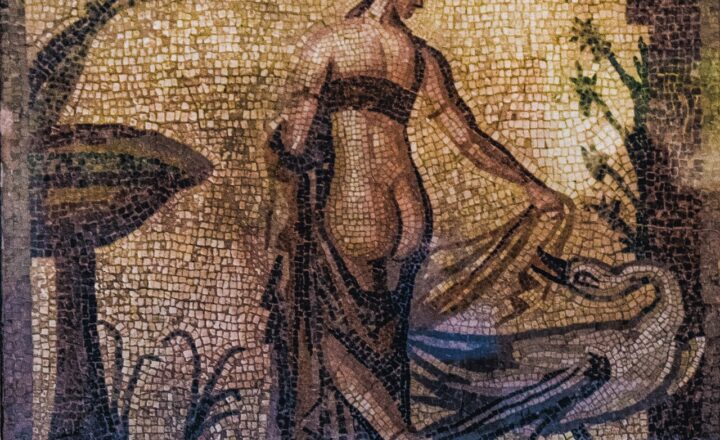The Enigmatic Paintings Found in Caves That Scientists Can’t Date or Decode
November 12, 2024

Cave paintings have long intrigued both scientists and art enthusiasts alike. These ancient artworks, found in caves across the globe, provide a unique glimpse into the lives, beliefs, and practices of our prehistoric ancestors. However, some of these paintings present a perplexing challenge that has left researchers puzzled for decades: the inability to accurately date or decode them.
In this exploration, we will delve into some of the world’s most enigmatic cave paintings, the challenges associated with dating and decoding these artworks, and the implications of these mysteries on our understanding of prehistoric cultures.
1. What are Cave Paintings?
Cave paintings, primarily found across Europe, Asia, Africa, and the Americas, are some of the earliest known forms of artistic expression. These images are typically created using natural pigments derived from minerals, plants, and animal sources. The paintings often depict animals, human figures, geometric shapes, and abstract designs, reflecting the daily lives, environments, and mysticism of ancient peoples.
Caves like Lascaux in France and Altamira in Spain have become famed for their stunning and intricate artworks, showcasing the skill and creativity of humanity going back tens of thousands of years. But as we explore further, we encounter numerous works of art that refuse to yield their secrets.
2. The Challenge of Dating Cave Paintings
Dating cave paintings accurately is immensely challenging due to several factors:
- Material Limitations: Most cave paintings are made from mineral-based pigments that don’t contain organic materials suitable for carbon dating, limiting researchers’ ability to pinpoint when the paintings were created.
- Technological Constraints: Techniques like thermoluminescence dating can only provide approximate ages for the application of pigments, not the creation of the artwork itself.
- Cultural Variability: Different ancient cultures employed various techniques and materials to create their artwork, making generalizations about dating problematic.
Despite these hurdles, researchers continue to develop innovative techniques to gain insights, such as stratigraphic dating and new imaging technologies that might unravel secrets from these ancient depths.
3. Case Studies of Indecipherable Cave Art
Several cave painting sites have baffled scientists, with images that refuse to comply with traditional understanding. Here are a few notable examples:
a. The Chauvet Cave, France
Discovered in 1994, the Chauvet Cave is home to spectacular paintings of animals like horses, lions, and rhinoceroses. It has been difficult to accurately date its artwork due to the absence of direct organic material nearby. While some researchers believe it dates back to around 36,000 years, others argue it could be far more contemporary, leaving a cloud of uncertainty surrounding its age and meaning.
b. The Bhimbetka Rock Shelters, India
Located in Madhya Pradesh, these shelters boast over 800 rock shelters with ancient paintings, some dating back to an astonishing 30,000 years. Yet, the interpretation of these images remains complex and debated. What stories do these depictions of animals, social scenes, and geometric symbols tell us? The inability to fully decode their meanings raises fascinating questions about cultural narratives lost to time.
c. The Cueva de las Manos, Argentina
Famous for its stenciled handprints and various animal depictions, the cave shows artistry spanning thousands of years. However, while its general timeframe is known, the symbolic meaning of the handprints and their variation remains a mystery, raising questions about social identity and ritual practices.
4. Theories Explaining the Enigmatic Art
Since researchers cannot definitively date or decode numerous cave paintings, various theories have emerged:
- Shamanistic Practices: Some scientists propose that these artworks were created during spiritual or shamanistic rituals, imparting a connection between the physical and spiritual worlds.
- Communication and Storytelling: Another theory posits that cave paintings served as a form of storytelling or record keeping, sharing important knowledge and cultural beliefs among groups.
- Art for Art’s Sake: It’s also possible that our ancestors created these compositions purely for aesthetic enjoyment and expression, challenging the notion that art needs a functional purpose.
These theories highlight the multifaceted nature of cave art and explore the relationships between ancient societies and their environments.
5. The Importance of Cave Paintings in Understanding Human History
Despite uncertainties surrounding some artworks, cave paintings remain crucial to our understanding of human history. They not only represent early forms of artistic expression but also allow us to gain insights into early human life, social structures, and belief systems. The fact that some paintings defy dating or interpretation only deepens their mystery and allure, driving researchers to continue their quest for answers.
The existence of these paintings also prompts larger discussions about human creativity, cognition, and cultural development, further emphasizing their significance in the broader context of our shared history.
Conclusion
In conclusion, the enigmatic paintings found in caves present a tantalizing mystery for scientists and historians alike. While the challenge of dating and decoding these artworks remains, the exploration continues to motivate us to investigate the rich tapestry of human history. By unraveling the stories behind these ancient masterpieces, we not only connect with our ancestors but also enhance our understanding of who we are and where we come from. The allure of these paintings lays not only in their beauty but in the questions they evoke about our shared humanity and the mysteries of time.







